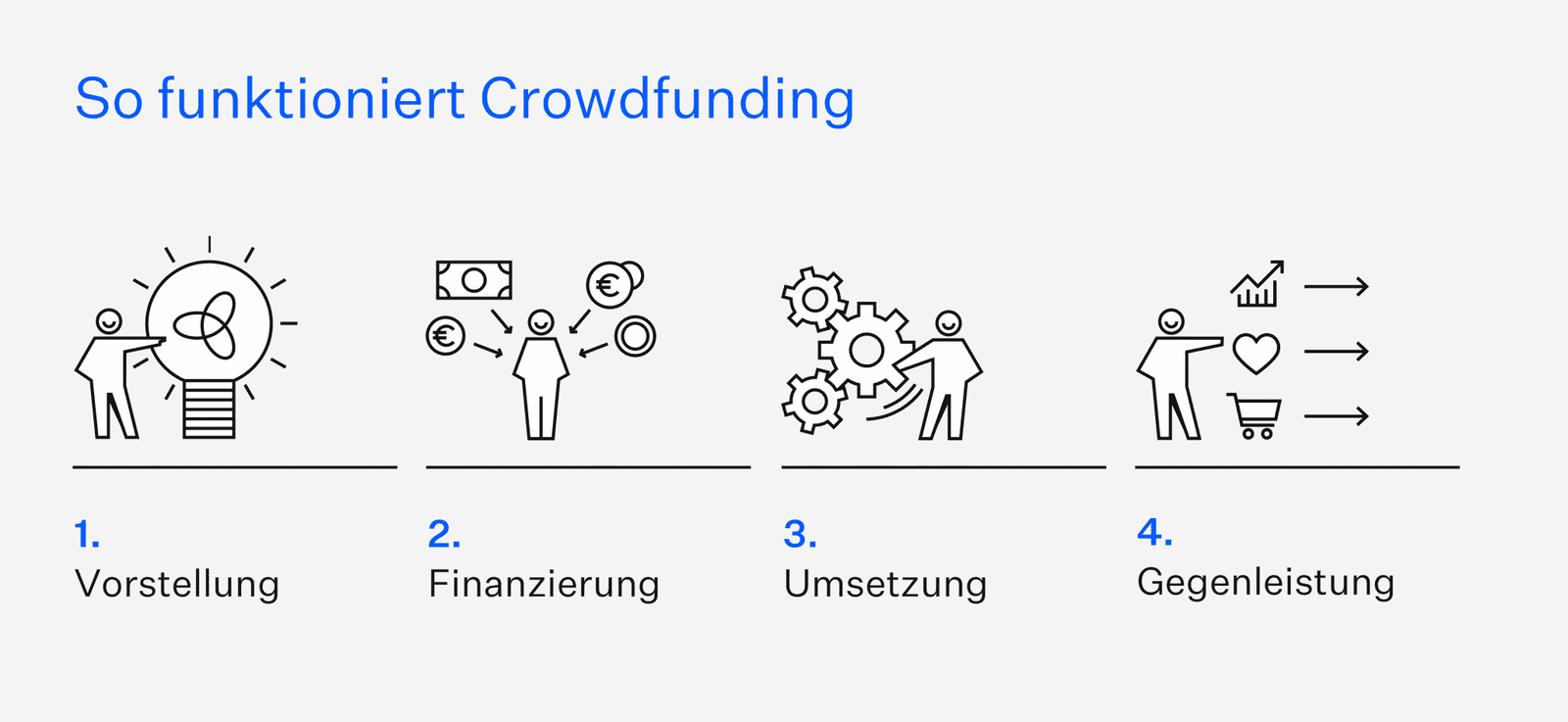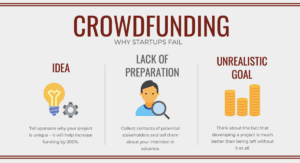In this article, you will learn about Indiegogo's fees and what you need to know before launching a campaign on the platform. Indiegogo is a popular crowdfunding platform that allows individuals and businesses to raise funds for their creative projects or ventures. By understanding the fees involved, you can make informed decisions about your campaign and maximize your chances of success.
When it comes to Indiegogo's fees, there are a few key factors to keep in mind. Firstly, there is a platform fee, which is a percentage of the funds you raise. This fee can vary depending on the type of campaign you are running. Additionally, there may be payment processing fees, which cover the cost of processing the payments made by backers. These fees can also vary depending on factors such as the currency used and the country you are fundraising from. By understanding these fees, you can budget accordingly and set realistic funding goals for your campaign.
Understanding Indiegogo's Fees
Introduction to Indiegogo
Indiegogo is a popular crowdfunding platform that allows individuals and businesses to raise funds for their projects and ideas. Whether you are an entrepreneur looking to launch a new product or an artist seeking financial support for a creative endeavor, Indiegogo provides a platform to connect with a global community of potential backers. Understanding Indiegogo's fee structure is crucial to ensure that you maximize the funds raised while taking into account the costs associated with running a campaign.
How Indiegogo Works
Indiegogo operates on the concept of crowdfunding, which involves raising money from a large number of individuals, typically through an online platform. Unlike traditional funding methods, such as loans or venture capital, crowdfunding allows project creators to reach out to a wide audience and receive contributions in varying amounts.
Overview of Indiegogo's Platform
Indiegogo offers a user-friendly and intuitive platform for creators to showcase their projects, engage with potential backers, and manage their campaign from start to finish. The platform allows project creators to set their funding goals and deadlines, create compelling campaign pages with images and videos, and communicate updates and rewards with their backers.
Understanding Crowdfunding
Definition of Crowdfunding
In its simplest form, crowdfunding refers to the practice of obtaining funding from a large number of individuals, collectively known as backers, who each contribute a small or large amount towards a project or idea. Crowdfunding platforms, such as Indiegogo, provide an online space where creators can present their projects and seek financial support from interested backers.
Different Types of Crowdfunding
There are several types of crowdfunding models that individuals or businesses can utilize based on their specific project goals and needs:
-
Donation-Based Crowdfunding: This model involves receiving monetary contributions from backers without any expectation of financial return. Backers contribute purely out of goodwill or to support a cause or project they believe in.
-
Reward-Based Crowdfunding: In this model, backers receive non-financial rewards or perks in return for their contributions. These rewards can range from a simple thank you note to early access to the product or exclusive merchandise.
-
Equity Crowdfunding: This model allows backers to become shareholders or investors in a project or company. In return for their contributions, backers receive equity or a share of the project's profits.
Benefits of Crowdfunding
Crowdfunding offers various advantages to project creators, including:
- Access to a global network of potential backers.
- Validation and market feedback on the viability of a product or idea.
- A platform to build an engaged community of supporters.
- Reduced reliance on traditional funding sources.
- Opportunity to showcase creativity and innovation.
Key Features of Indiegogo
Types of Projects Allowed on Indiegogo
Indiegogo supports a wide range of projects across different categories, including technology, art, film, music, and social causes. Whether you have a tech gadget prototype that needs development funding or a nonprofit initiative that requires financial support, Indiegogo welcomes projects of all types and sizes.
Indiegogo's Payment Options
Indiegogo provides flexible payment options to both project creators and backers. Project creators can choose between two payment methods: Stripe and PayPal. Stripe allows creators to accept payments via credit or debit cards, while PayPal provides a convenient way to receive funds from backers' PayPal accounts. Backers, on the other hand, can contribute using a credit card or PayPal account.
Campaign Creation Process on Indiegogo
Creating a campaign on Indiegogo is a straightforward process that involves the following steps:
- Sign up on Indiegogo: Register for a free account on the Indiegogo platform to get started.
- Plan Your Campaign: Define your project goals, funding target, and timeline. Create a compelling campaign story and identify potential rewards for your backers.
- Build Your Campaign Page: Customize your campaign page with high-quality visuals, an engaging story, and a clear call-to-action. Include details about your project, team, and any previous accomplishments.
- Launch Your Campaign: Once your campaign page is ready, hit the launch button and make it live. Promote your campaign through social media, email marketing, and other channels to attract potential backers.
- Engage with Backers: Respond to questions and comments from backers promptly. Provide updates on the campaign's progress and share exciting news and milestones.
Indiegogo's Fee Structure
Explanation of Fees Charged by Indiegogo
As a crowdfunding platform, Indiegogo charges certain fees to cover the costs of maintaining and operating its services. These fees are essential for ensuring that Indiegogo can continue providing an effective platform for creators and backers to connect.
Types of Fees
Indiegogo's fee structure consists of three main types of fees:
-
Platform Fees: These fees are charged by Indiegogo for the use of their platform and services. They are typically a percentage of the funds raised and vary depending on the campaign's success.
-
Processing Fees: These fees are levied by payment processors, such as Stripe or PayPal, for their services in handling financial transactions. They are calculated as a percentage of the contribution amount plus a fixed fee.
-
Campaign Fees: Indiegogo offers optional marketing and promotional services, known as “Boosted” services, which creators can choose to enhance their campaign's visibility and reach. These services come with additional fees.
How Fees Are Calculated and Collected
Indiegogo's fees are deducted from the funds raised by a campaign and are collected at the end of the campaign period. The fees are calculated based on the total amount of funds raised, including contributions and any additional funds generated.
It is essential for project creators to consider these fees when setting their funding goals and rewards, as they can impact the overall funds received. However, the benefits of gaining exposure on Indiegogo's platform and reaching a wide audience often outweigh the costs associated with the fees.
Platform Fees
Definition and Purpose of Platform Fees
Platform fees are charged by Indiegogo for the use of their crowdfunding platform and the services they provide. These fees contribute to the maintenance, development, and improvement of the platform to ensure a seamless experience for creators and backers alike.
Percentage-Based Platform Fees
Indiegogo's platform fees are typically a percentage of the funds raised through the campaign. The specific fee percentage varies depending on the campaign's success and funding type. In some cases, if a campaign does not reach its funding goal, the platform fee may be higher.
Fixed Platform Fees
In addition to the percentage-based fees, Indiegogo may also charge a fixed platform fee for certain types of campaigns or projects. These fees are a flat amount and are typically applied to campaigns that fall within specific categories, such as equity crowdfunding or nonprofit fundraising.
Processing Fees
Overview of Processing Fees
Processing fees are charged by payment processors, such as Stripe or PayPal, for their services in handling the financial transactions that occur during a crowdfunding campaign. These fees cover the costs associated with securely processing payments and transferring funds between backers and project creators.
Types of Payment Processing Fees
Payment processing fees typically consist of two components:
-
Percentage-Based Fees: These fees are calculated as a percentage of the contribution amount. They vary depending on the payment processor used and the country of the transaction.
-
Fixed Fees: In addition to the percentage-based fees, payment processors also charge a fixed fee for each transaction. This fee is added to the percentage-based fee and may vary based on the currency used.
How Processing Fees Are Calculated
The total processing fees for a campaign are calculated based on the total funds raised through the campaign. The percentage-based fee is applied to each individual contribution, while the fixed fee is added to each transaction.
It is important for project creators to account for these fees when planning their campaign budget, as they can have an impact on the overall funds received.
Campaign Fees
What Are Campaign Fees
Campaign fees, also known as “Boosted” services, are additional marketing and promotional services offered by Indiegogo to help creators increase the visibility and reach of their campaigns. These services are entirely optional and can provide valuable exposure for projects seeking to stand out in the crowd.
Criteria for Campaign Fees
The fees charged for campaign services are determined by the specific Boosted service selected by the project creator. The cost of each Boosted service varies and can be found on the Indiegogo website. Creators can choose the services that best align with their campaign goals and budget.
Refunds and Adjustments Related to Campaign Fees
In the event of a campaign refund or adjustment, Indiegogo may provide a partial refund of the campaign fees associated with the refunded amount. The specific refund policy and eligibility criteria for refunds can be found in Indiegogo's terms of service.
Additional Costs and Services
Value-Added Services Offered by Indiegogo
In addition to the standard platform and processing fees, Indiegogo offers value-added services that can enhance a campaign's chances of success. These services include:
- InDemand: This post-campaign feature allows project creators to continue accepting contributions even after the campaign has ended.
- Shipping and Fulfillment: Indiegogo partners with logistics providers to offer seamless shipping and fulfillment solutions to project creators.
- Partner Discounts: Indiegogo partners with various service providers to offer discounts on manufacturing, marketing, and other essential services.
Costs Associated with Additional Services
The costs associated with these additional services vary depending on the specific service and the project's requirements. Indiegogo provides detailed information on pricing and options for each service on their website.
Benefits of Utilizing Additional Services
While these additional services may come with extra costs, they can provide significant benefits to project creators. InDemand, for example, allows creators to continue generating funds even after the initial campaign ends, keeping the momentum going. Shipping and fulfillment services streamline the process of delivering rewards to backers, ensuring a positive experience that can boost a project's reputation.
Tips for Maximizing Funds
Strategies to Attract More Backers
-
Craft a Compelling Story: Create a captivating narrative that clearly communicates your project's purpose, goals, and impact. Use storytelling techniques to emotionally engage potential backers.
-
Offer Attractive Rewards: Provide a range of appealing rewards that cater to different contribution levels. Consider offering exclusive perks or limited-edition items to incentivize higher contributions.
-
Engage with Your Backers: Regularly communicate with your backers, providing updates on the campaign's progress, milestones reached, and any challenges faced. Maintain an open line of communication to build trust and foster a sense of community.
Effective Marketing and Promotion Techniques
-
Leverage Social Media: Utilize popular social media platforms to generate buzz around your campaign. Share engaging content, behind-the-scenes glimpses, and testimonials from satisfied backers.
-
Collaborate with Influencers: Identify influencers or industry experts who align with your project's goals and can help promote your campaign to their followers. Partnering with influencers can expand your reach and credibility.
-
Tap into Existing Networks: Reach out to your personal and professional networks, including friends, family, colleagues, and industry contacts. Encourage them to support and share your campaign with their networks.
Building Trust and Credibility with Potential Backers
-
Provide Detailed Project Information: Be transparent about your project, including your team's background, timeline, and how the funds will be used. Potential backers are more likely to support campaigns that are transparent and trustworthy.
-
Demonstrate Previous Success: If you have successfully completed similar projects in the past, showcase your accomplishments to build trust and credibility. Share testimonials and case studies that highlight the positive impact of your work.
-
Communicate Risk and Challenges: Be honest about any potential risks or challenges associated with your project. By addressing potential concerns upfront, you demonstrate your ability to overcome obstacles and adapt to unforeseen circumstances.
Case Studies
Real-Life Examples of Successful Campaigns
-
Pebble Time: Pebble, a smartwatch company, ran a campaign on Indiegogo to fund the production of the Pebble Time smartwatch. The campaign raised over $20 million, making it one of the most successful crowdfunding campaigns at the time.
-
Exploding Kittens: Exploding Kittens, a card game created by Elan Lee and The Oatmeal's Matthew Inman, raised over $8 million on Indiegogo. The campaign used humor and creative visuals to attract backers.
-
Solar Roadways: Scott and Julie Brusaw created a campaign to fund Solar Roadways, a groundbreaking concept of solar panels installed on roadways. The project raised over $2.2 million on Indiegogo.
Analysis of Campaign Strategies and Outcomes
The success of these campaigns can be attributed to several key factors:
- Clear and compelling campaign messages.
- Engaging storytelling and visuals.
- Well-defined rewards and perks.
- Effective utilization of social media and influencers.
- Timely and transparent communication with backers.
Lessons Learned from Successful Campaigns
Successful campaigns teach us valuable lessons about what works and what doesn't when it comes to crowdfunding:
- A well-planned and executed marketing strategy is crucial for attracting a wide audience.
- Engaging with backers and acknowledging their support fosters a sense of community and loyalty.
- Transparency and open communication build trust and credibility.
- Utilizing creative and unique rewards can incentivize larger contributions.
Comparing Indiegogo with Other Platforms
Overview of Alternative Crowdfunding Platforms
While Indiegogo is a leading crowdfunding platform, there are other alternatives available that may better suit certain project needs. Some popular alternatives include Kickstarter, GoFundMe, and Patreon, each with its own unique features and fee structures.
Comparative Analysis of Fees and Features
When choosing a crowdfunding platform, it is essential to compare and evaluate the fees and features offered by different platforms. Consider factors such as platform fees, payment processing fees, marketing options, and the platform's user base and reputation. Determine which platform aligns best with your campaign's goals and budget.
Factors to Consider When Choosing a Platform
When selecting a crowdfunding platform, consider the following factors:
-
Project Category: Ensure that the platform supports projects in your industry or category.
-
Fees and Costs: Evaluate the fee structure of the platform, including platform fees, payment processing fees, and any additional service fees.
-
Platform Reputation: Research the platform's reputation and success rate of campaigns similar to yours. Look for testimonials and case studies to assess the platform's track record.
Resources and Support
Indiegogo's Customer Support Options
Indiegogo provides several customer support options, including email support and a comprehensive help center with articles and frequently asked questions. For urgent matters, a dedicated support team is available to address any issues or concerns.
Educational Resources and Guides
In addition to customer support, Indiegogo offers a range of educational resources and guides to help project creators navigate the crowdfunding process successfully. These resources cover topics such as campaign planning, marketing strategies, and fulfillment tips.
Helpful Tips for Campaign Management
Managing a crowdfunding campaign can be challenging, but with the right guidance, you can increase your chances of success. Here are some helpful tips:
- Plan your campaign carefully, including setting realistic funding goals and identifying target audiences.
- Develop a comprehensive marketing strategy that utilizes social media, influencers, and personal networks.
- Regularly engage and update your backers to maintain excitement and interest throughout the campaign.
- Be prepared for the unexpected and have contingency plans in place to address any challenges that may arise.
Potential Risks and Considerations
Common Challenges Faced by Crowdfunders
Crowdfunding campaigns can encounter various challenges along the way, including:
- Failure to reach the funding goal, resulting in no funds raised.
- Delays in fulfilling rewards due to unforeseen manufacturing or logistical issues.
- Legal complexities surrounding intellectual property rights.
- Competition from other projects or campaigns.
Financial Risks and Uncertainties
Crowdfunding campaigns come with inherent financial risks and uncertainties. While some campaigns achieve significant funding success, others may struggle to attract backers. It is crucial to plan for potential risks and ensure that you have a backup plan in case your campaign does not meet its funding goal.
Legal and Intellectual Property Considerations
Before launching a campaign, it is important to consider any legal and intellectual property implications associated with your project. Ensure that you have the necessary licenses, permissions, and trademarks in place to protect your work and avoid any legal disputes.
Conclusion
Understanding Indiegogo's fee structure is essential for successfully running a crowdfunding campaign. By familiarizing yourself with the various fees and costs involved, you can make informed decisions about budgeting and setting funding goals. Remember to consider the benefits of using Indiegogo, such as access to a global network of potential backers and a user-friendly platform for showcasing your project. With careful planning, effective marketing strategies, and dedication to open communication, you can maximize your chance of success on Indiegogo and achieve your funding goals.






